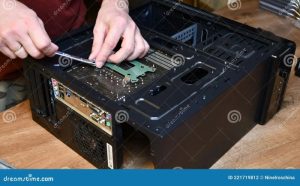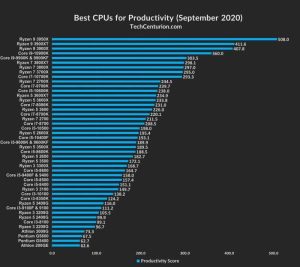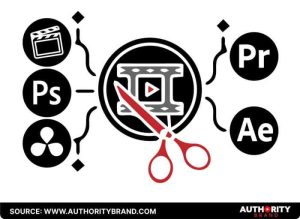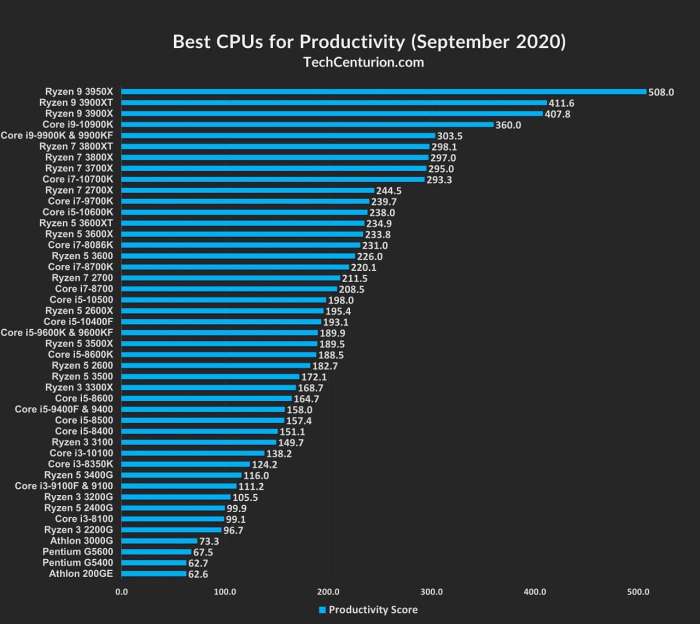
Dive into the world of computer hardware benchmarks and reviews, where performance assessment meets informed decision-making in a tech-savvy showdown!
From benchmarking tools to consumer reviews, this topic unveils the secrets behind choosing the best hardware for your needs.
Computer Hardware Benchmarks and Reviews

When it comes to assessing the performance of computer hardware, benchmarks play a crucial role in providing objective and standardized metrics. These benchmarks help users compare different hardware components and make informed decisions based on actual performance data.
Importance of Benchmarks
Benchmarks offer a standardized way to measure and compare the performance of CPUs, GPUs, storage devices, and other hardware components. They provide users with numerical scores or ratings that can be easily compared across different products and manufacturers.
- Benchmarks help users understand the real-world performance of hardware components under various workloads and applications.
- They allow users to identify the strengths and weaknesses of different hardware components, helping them make informed purchasing decisions.
- Manufacturers often use benchmarks to showcase the performance of their products and highlight any improvements over previous generations.
Popular Benchmarking Tools
There are several popular benchmarking tools used in the industry to evaluate the performance of computer hardware components:
- 3DMark: A widely-used benchmarking tool for assessing the gaming performance of GPUs.
- Geekbench: A cross-platform benchmarking tool that measures CPU and GPU performance.
- Cinebench: Specifically designed to evaluate the performance of CPUs and GPUs using real-world rendering tasks.
Significance of Reviews
Reviews play a critical role in helping consumers make informed decisions when purchasing computer hardware. They provide detailed insights, performance analysis, and user feedback that can influence a buyer’s choice.
- Reviews often highlight the strengths and weaknesses of hardware components, helping users understand their suitability for specific tasks or applications.
- Professional reviewers conduct thorough testing and evaluation of hardware components, providing valuable information that may not be available from benchmarks alone.
- User reviews and experiences shared on platforms like Amazon, Newegg, or specialized forums offer real-world insights that can complement benchmark data.
Electronics and Electrical
Electronics and electrical systems are crucial components in the functioning of computer hardware. The relationship between these two fields is intricate and essential for the operation of various computer components.
Relationship between Electronics and Computer Hardware Components
Electronics deal with the flow of electrons through circuits, while computer hardware components are physical devices that make up a computer system. These components, such as processors, memory modules, and graphics cards, rely on electronic circuits to function properly. The design and integration of electronic components within computer hardware are essential for the efficient operation of modern computers.
Role of Electrical Systems in Powering Computer Hardware
Electrical systems play a crucial role in providing power to computer hardware components. Power supplies convert AC power from the outlet into DC power that is used by computer components. The voltage regulation and distribution of power within a computer system are managed by electrical systems to ensure stable and uninterrupted operation of hardware components.
Impact of Electrical Engineering on the Development of Computer Hardware
Electrical engineering has had a significant impact on the development of computer hardware over the years. Advances in electrical engineering have led to the miniaturization of components, increased processing speeds, and improved energy efficiency in computer hardware. Engineers in this field work on designing power-efficient circuits, optimizing power delivery, and ensuring the reliability of electrical systems in computer hardware.
Computer Repair and Consulting
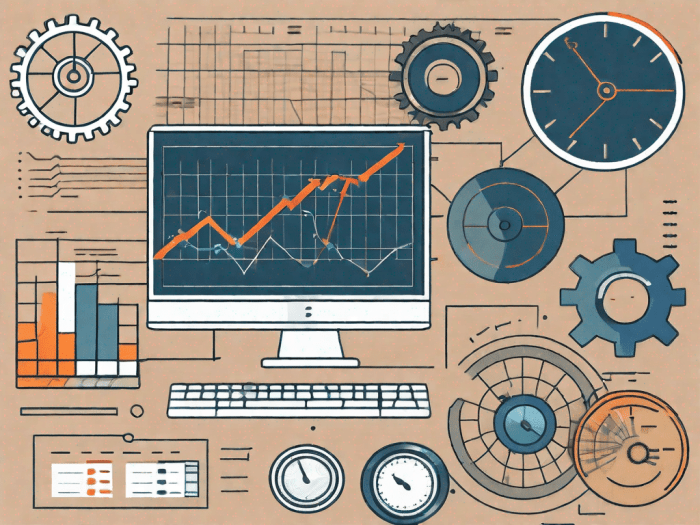
When it comes to computer repair and consulting, it is essential to have a good understanding of hardware components and troubleshooting techniques. Whether you are dealing with overheating issues, component failures, or simply need advice on upgrades, having the right knowledge can make a significant difference in resolving the problem efficiently.
Diagnosing Hardware Issues
- Start by checking the basics, such as ensuring all cables are properly connected and peripherals are working correctly.
- Run diagnostic tools to identify potential hardware problems, such as memory issues or hard drive failures.
- Listen for unusual noises or observe any error messages that can provide clues to the root cause of the issue.
- Monitor temperature levels to identify overheating components, which can lead to performance issues or even hardware damage.
Repairing Common Hardware Problems
- Clean out dust and debris from fans and heatsinks to improve airflow and prevent overheating.
- Replace faulty components, such as a failing hard drive or a malfunctioning power supply, with compatible replacements.
- Apply new thermal paste to the CPU and GPU to improve heat transfer and reduce temperatures.
- Update drivers and firmware to ensure all components are functioning optimally and are compatible with the operating system.
Role of Consulting Services
- Consulting services can provide expert advice on hardware upgrades based on your specific needs and budget constraints.
- They can recommend the best components for your system to enhance performance and prolong the lifespan of your computer.
- Consultants can also offer maintenance tips and schedules to keep your hardware in top condition and prevent future issues.
- By seeking consulting services, you can make informed decisions about your hardware investments and ensure you are getting the most out of your computer system.
Data Communication
Data communication refers to the process of exchanging data between two or more devices through a transmission medium. Computer hardware plays a crucial role in facilitating these communication processes by providing the necessary components to transmit, receive, and process data effectively.
Hardware Devices for Data Transmission and Networking
- Network Interface Cards (NICs): NICs are hardware devices that allow computers to connect to a network and communicate with other devices. They facilitate the transmission and reception of data packets over a network.
- Routers: Routers are essential hardware devices that direct data packets between networks. They determine the best path for data to travel and ensure that it reaches its intended destination efficiently.
- Switches: Switches are used to connect multiple devices within a local area network (LAN). They forward data packets only to the intended recipient device, improving network efficiency.
- Modems: Modems are devices that modulate and demodulate analog signals to enable digital data transmission over telephone lines or cable systems. They are commonly used for connecting to the internet.
Importance of Reliable Hardware in Data Communication
- Efficiency: Reliable hardware ensures that data is transmitted and received without errors, leading to faster communication processes and improved network performance.
- Data Integrity: Reliable hardware helps maintain the integrity of data during transmission, reducing the risk of data corruption or loss.
- Security: Secure hardware devices play a vital role in protecting data from unauthorized access or cyber threats, ensuring the confidentiality and privacy of sensitive information.
Computers E-Books
The role of computer hardware in e-book reading devices is crucial for delivering a seamless and enjoyable reading experience. From the display quality to the processing power, each hardware component plays a significant role in shaping the user experience.
Impact of Hardware Specifications on E-Book Reading Experience
- Display Quality: High-resolution screens with vibrant colors and adjustable brightness settings enhance the readability of e-books, reducing eye strain for prolonged reading sessions.
- Battery Life: Efficient hardware components such as low-power processors and optimized software contribute to longer battery life, allowing users to enjoy uninterrupted reading on e-book devices.
- Storage Capacity: Adequate storage space ensures that users can carry a vast library of e-books with them, providing convenience and flexibility in choosing reading material.
- Processing Power: Faster processors enable smooth page-turning, quick search functionalities, and seamless navigation within e-books, enhancing the overall user experience.
Evolution of Hardware Technologies in E-Book Readers
As technology continues to advance, e-book readers have evolved to incorporate innovative hardware features to improve performance and user satisfaction.
- E-Ink Displays: The introduction of E-ink displays revolutionized e-book readers by providing a paper-like reading experience with reduced glare and eye strain.
- Lighting Technology: Built-in front lights and adjustable brightness settings have become standard features in modern e-book readers, allowing users to read in various lighting conditions.
- Integration of Touchscreens: Touchscreen interfaces have replaced physical buttons on e-book readers, offering intuitive navigation and interaction with e-books.
- Connectivity Options: Wi-Fi and 4G connectivity enable seamless access to e-book stores, cloud storage, and social features, enhancing the overall reading experience.
Graphics and Multimedia
Graphics and multimedia performance on a computer system heavily rely on the hardware components. From gaming to video editing and graphic design, the specifications of the hardware can greatly impact the overall performance and user experience.
Hardware Requirements for Optimal Graphics and Multimedia Performance
- Powerful Graphics Card: A dedicated graphics card with a high amount of VRAM is essential for smooth rendering of graphics and videos.
- Fast Processor: A multi-core processor with high clock speeds can handle the calculations required for graphics processing efficiently.
- Sufficient RAM: Having an ample amount of RAM allows for quick access to data and resources, improving overall performance.
- High-Resolution Display: A high-resolution monitor or display is crucial for showcasing graphics and multimedia content with clarity and detail.
Impact of Hardware Specifications on Gaming, Video Editing, and Graphic Design
- Gaming: A powerful graphics card and fast processor are crucial for running modern games at high settings and frame rates.
- Video Editing: A combination of a fast processor, ample RAM, and a dedicated graphics card is necessary for smooth video editing and rendering.
- Graphic Design: High-resolution displays, color-accurate monitors, and powerful graphics cards are essential for graphic designers to work on detailed projects efficiently.
Essential Hardware Components for Handling Graphics-Intensive Tasks
- Graphics Processing Unit (GPU): A dedicated GPU with high VRAM and CUDA cores is essential for handling complex graphics tasks effectively.
- Central Processing Unit (CPU): A multi-core CPU with high clock speeds is crucial for processing graphics-intensive calculations quickly.
- Random Access Memory (RAM): Sufficient RAM allows for quick access to data and resources, reducing loading times and improving overall performance.
- Storage Drive: A fast SSD or NVMe drive can help in loading large multimedia files quickly and improving overall system responsiveness.
Computers Hardware
In the world of computers, hardware components play a crucial role in determining the performance and capabilities of a system. From CPUs to GPUs, RAM, and storage devices, each component has its unique function and contribution to the overall computing experience.When it comes to selecting the right hardware components, it’s essential to consider factors such as processing power, graphics capabilities, memory capacity, and storage options.
Understanding the latest trends in computer hardware design and innovation can help users make informed decisions when upgrading or building a new system.
Comparison of Computer Hardware Components
- CPUs: Central Processing Units are the brains of a computer, responsible for executing instructions and performing calculations. Different CPUs offer varying levels of performance, efficiency, and core counts.
- GPUs: Graphics Processing Units are specialized processors designed to handle graphics-intensive tasks such as gaming, multimedia editing, and rendering. GPUs come in different models with varying levels of performance and memory capacity.
- RAM: Random Access Memory is temporary storage that stores data and instructions for the CPU to access quickly. More RAM allows for smoother multitasking and faster application performance.
- Storage Devices: Hard drives, solid-state drives, and NVMe drives are common storage options for computers. Each type offers different capacities, speeds, and durability.
Latest Trends in Computer Hardware Design
- Increased Core Counts: CPUs and GPUs are now offering more cores to handle complex tasks and demanding applications.
- Optical Computing: Researchers are exploring optical computing as a potential future technology to increase processing speeds and reduce energy consumption.
- AI Integration: Artificial Intelligence is being integrated into hardware components to optimize performance and enhance user experience.
Tips for Selecting the Right Hardware Components
- Identify Your Needs: Determine the primary use of your computer to choose hardware components that align with your specific requirements.
- Consider Budget: Set a budget for your hardware upgrades or build to ensure you get the best value for your money.
- Research Reviews: Read reviews and benchmarks to compare different hardware options and make an informed decision.
Ending Remarks
As we wrap up our exploration of computer hardware benchmarks and reviews, remember: knowledge is power when it comes to tech decisions!
Clarifying Questions
What are the key benefits of using benchmarks for computer hardware?
Benchmarks help in comparing performance, identifying bottlenecks, and making informed purchasing decisions.
How do consumer reviews influence hardware purchases?
Consumer reviews provide real-world insights into product performance, reliability, and overall user satisfaction.
Which benchmarking tools are commonly used in the industry?
Popular benchmarking tools include 3DMark, PassMark, Cinebench, and Geekbench, among others.
